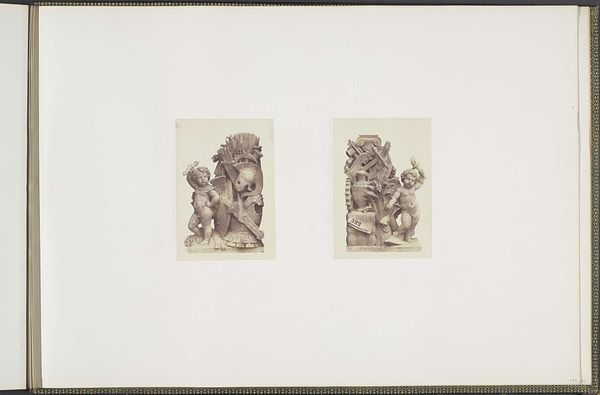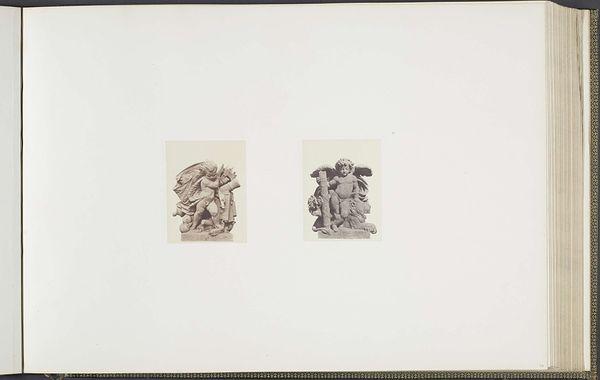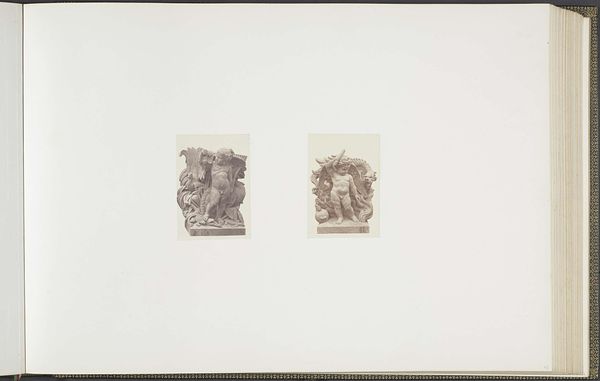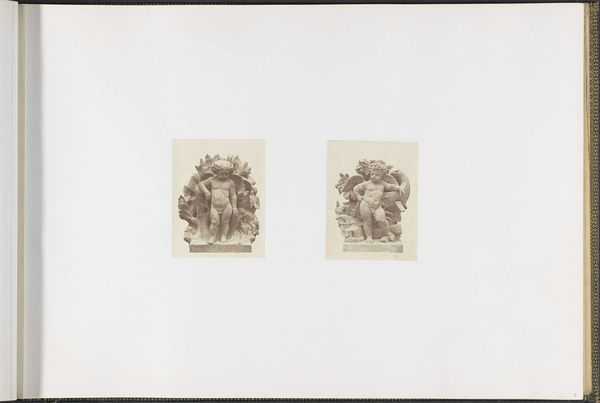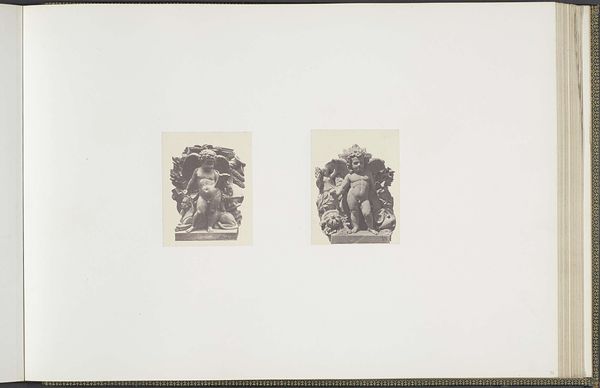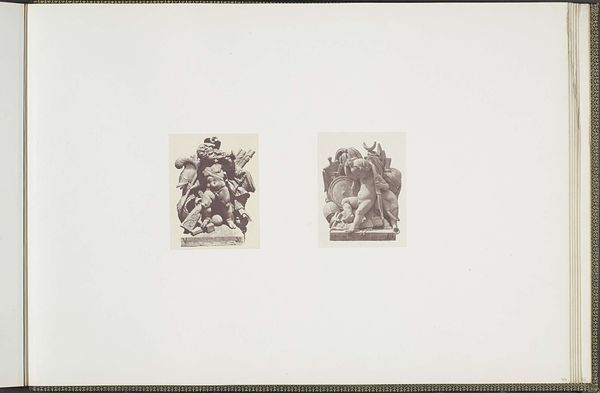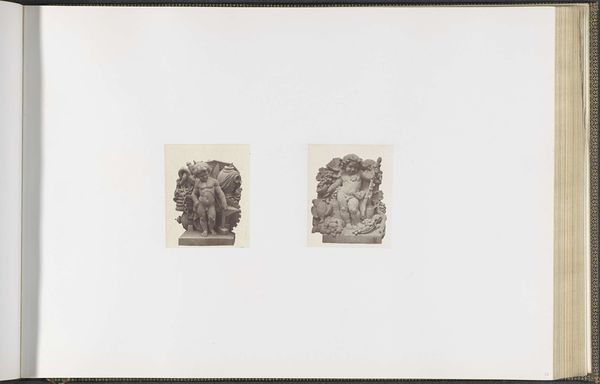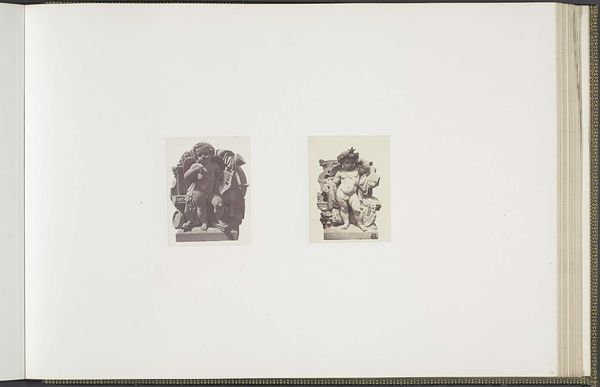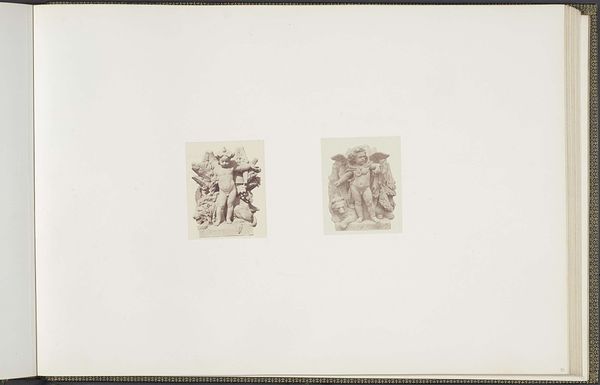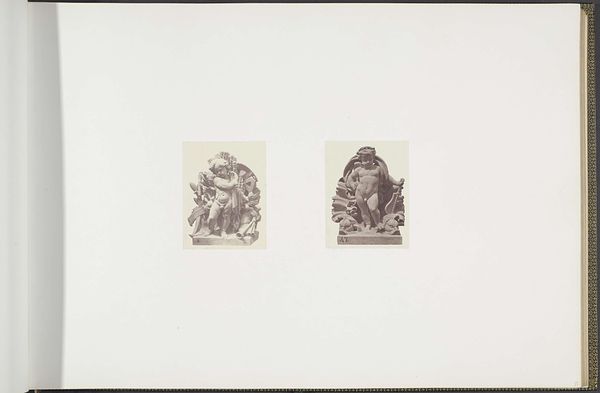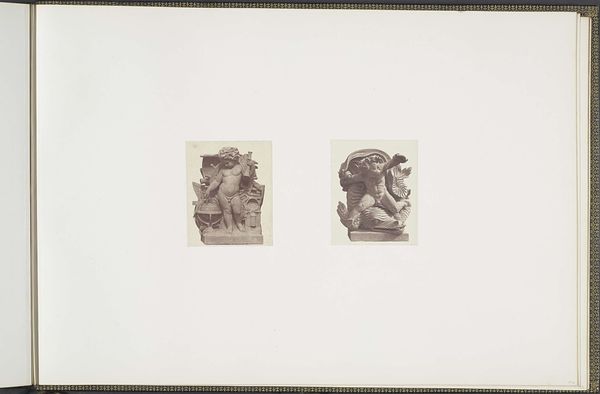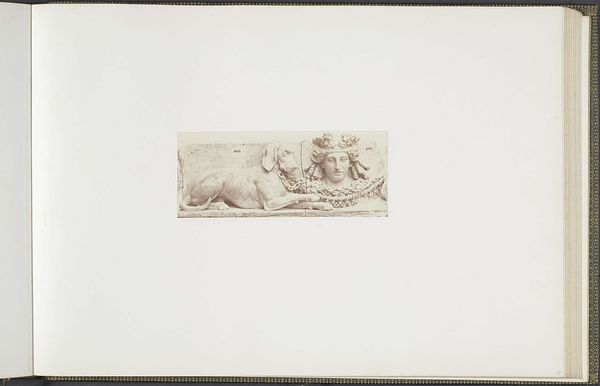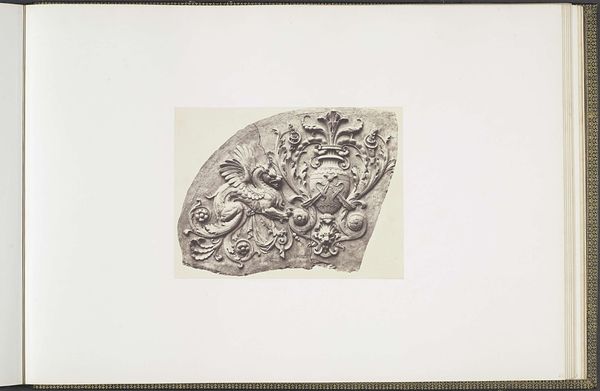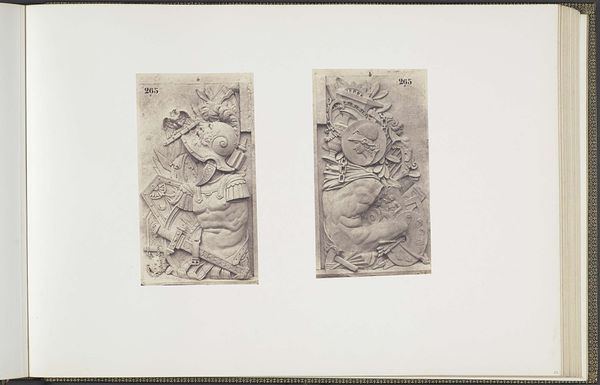
Gipsmodellen voor beeldhouwwerken op het Palais du Louvre: "Enfant et attributs" door Georges Diébolt c. 1855 - 1857
0:00
0:00
print, photography, sculpture, albumen-print
# print
#
classical-realism
#
photography
#
sculpture
#
academic-art
#
albumen-print
Dimensions: height 378 mm, width 556 mm
Copyright: Rijks Museum: Open Domain
This photograph by Edouard Baldus captures plaster models for sculptures at the Palais du Louvre. Dominating the composition are cherubic figures amidst allegorical symbols, a language deeply rooted in classical antiquity. The child, or putto, symbolizes innocence and new beginnings, but in its varied historical contexts, it is seen in ancient Roman art as representations of Cupid, the god of love, or as souls of the dead accompanying funerary processions. Its recurring presence in Renaissance and Baroque art then signals a cultural obsession with a return to classical ideals and the continuity of historical memory. The appearance of children is a powerful emotional force, engaging viewers on a deep, subconscious level, and tapping into collective memories associated with renewal and the life cycle. This symbol’s persistent return throughout art history marks a cyclical progression, constantly evolving yet intrinsically linked to its origins, proving that these forms are perpetually reborn, adapting to the psychological and cultural landscape of each era.
Comments
No comments
Be the first to comment and join the conversation on the ultimate creative platform.
